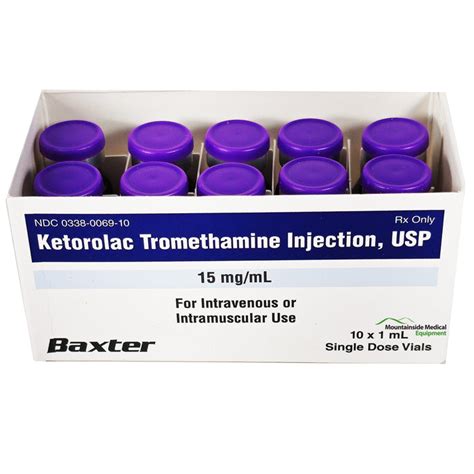In the complex landscape of healthcare, individuals are often faced with the daunting task of navigating through various health plans to find the one that best suits their needs. The choice of a health plan can significantly impact one’s financial stability and access to quality healthcare services. With the myriad of options available, it’s essential to understand the core components of individual health plans, their benefits, and how to choose the right one.
Understanding Individual Health Plans
Individual health plans are designed for people who are not covered by their employer or another group health plan. These plans can be tailored to meet specific health needs and budgets, offering a range of options from basic coverage to more comprehensive plans that include additional services like dental, vision, and prescription drug coverage.
Types of Individual Health Plans
Major Medical Plans: These plans provide comprehensive coverage, including doctor visits, hospital stays, surgical procedures, and often, preventive care services. They are typically more expensive but offer broader coverage.
Catastrophic Plans: Designed for younger individuals or those who cannot afford other types of coverage, catastrophic plans have lower premiums but higher deductibles. They primarily cover essential health benefits in the event of a serious illness or accident.
Short-Term Limited-Duration Insurance (STLDI) Plans: These plans are not major medical coverage and are designed for temporary gaps in coverage. They often have lower premiums but do not cover pre-existing conditions and may not offer the same level of coverage as major medical plans.
Medicare Supplement Insurance Plans: For individuals who qualify for Medicare, these plans help cover out-of-pocket costs not covered by Medicare, such as deductibles, copayments, and coinsurance.
Key Considerations When Choosing a Health Plan
Network: Check if your primary care physician and specialists are part of the plan’s network. Visiting in-network providers can significantly reduce your out-of-pocket costs.
Deductible: The amount you must pay each year before your insurance plan starts to pay its share of costs. Higher deductibles often mean lower premiums but may result in higher upfront costs when you need care.
Co-payments and Co-insurance: These are the costs you pay for healthcare services after meeting your deductible. Co-payments are fixed amounts, while co-insurance is a percentage of the costs.
Maximum Out-of-Pocket (MOOP) Expenses: This is the maximum amount you’ll pay for healthcare expenses in a year. After reaching the MOOP, your plan covers 100% of eligible expenses.
Preventive Care: Many plans cover preventive services like annual physicals, screenings, and vaccinations without additional costs, promoting early detection and prevention of health issues.
Prescription Drug Coverage: If you regularly take prescription medications, consider a plan that covers your drugs and offers a favorable formulary (list of covered drugs).
Comparative Analysis of Health Plans
Evaluating health plans side by side can help individuals make informed decisions. Factors to compare include:
- Premium Cost: The monthly cost of the plan.
- Network and Providers: The quality and accessibility of healthcare providers.
- Coverage and Benefits: The range of healthcare services covered.
- Cost Sharing: Deductibles, co-payments, and co-insurance rates.
- Out-of-Pocket Maximum: The highest amount you could pay in a year for healthcare.
Navigating the Health Insurance Marketplace
The Health Insurance Marketplace, also known as the health insurance exchange, is a platform where individuals can purchase health insurance plans during the annual open enrollment period or through special enrollment periods under qualifying circumstances. The marketplace offers subsidized plans for those who qualify based on income, making healthcare more affordable.
Future Trends in Individual Health Plans
The healthcare landscape is constantly evolving, with trends towards more personalized medicine, increased use of telehealth services, and a focus on preventive care. As technology advances, we can expect to see more innovative health plans that incorporate digital health tools and services, aiming to improve health outcomes while controlling costs.
Expert Insights
According to health insurance experts, individuals should prioritize their specific health needs, budget, and preferred providers when selecting a health plan. It’s also crucial to read the fine print and understand what is covered and what is not, as well as any limitations or exclusions. Seeking guidance from a licensed health insurance agent or broker can provide valuable insights and help navigate the complexities of health insurance.
Conclusion
Choosing the right health plan as an individual requires careful consideration of various factors, from premiums and provider networks to coverage options and out-of-pocket expenses. By understanding the types of plans available, comparing options, and staying informed about the evolving healthcare landscape, individuals can make more informed decisions about their health insurance, ensuring they have the coverage they need at a cost they can afford.
FAQ Section
What is the difference between a major medical plan and a catastrophic plan?
+Major medical plans offer comprehensive coverage, including preventive care, doctor visits, hospital stays, and more, typically at a higher premium. Catastrophic plans have lower premiums but higher deductibles, primarily covering essential health benefits in the event of a serious illness or accident, with limited coverage for routine care.
How do I know if I qualify for a subsidy to lower my health insurance premiums?
+To qualify for subsidies, you must purchase a plan through the Health Insurance Marketplace and meet certain income requirements, which are typically between 100% and 400% of the federal poverty level for your household size. You can use the subsidy calculator on the Marketplace website or consult with a licensed agent to determine your eligibility.
Can I change my health plan outside of the open enrollment period?
+Generally, you can only change or enroll in a new health plan during the annual open enrollment period. However, if you experience a qualifying life event (such as getting married, having a baby, moving to a new area, or losing other coverage), you may be eligible for a special enrollment period, allowing you to make changes to your coverage outside of the open enrollment period.
What is the maximum out-of-pocket expense, and how does it work?
+The maximum out-of-pocket (MOOP) expense is the highest amount you’ll pay for healthcare expenses in a year. After reaching the MOOP, your health plan covers 100% of eligible expenses for the remainder of the year. This includes deductibles, co-payments, and co-insurance, but does not typically include premiums or costs for services not covered by your plan.
How do I choose the best health plan for my needs?
+Choosing the best health plan involves considering your health needs, budget, and preferred healthcare providers. Evaluate the plan’s network, coverage options, deductible, co-payments, co-insurance, and maximum out-of-pocket expenses. It’s also advisable to consult with a licensed health insurance agent or broker who can provide personalized guidance based on your specific situation.
Can I purchase health insurance directly from an insurer outside of the Marketplace?
+Yes, you can purchase health insurance directly from an insurer. However, plans purchased outside of the Marketplace may not be eligible for subsidies, and the range of plans and prices might be different. It’s essential to compare plans both on and off the Marketplace to find the best option for your needs and budget.



